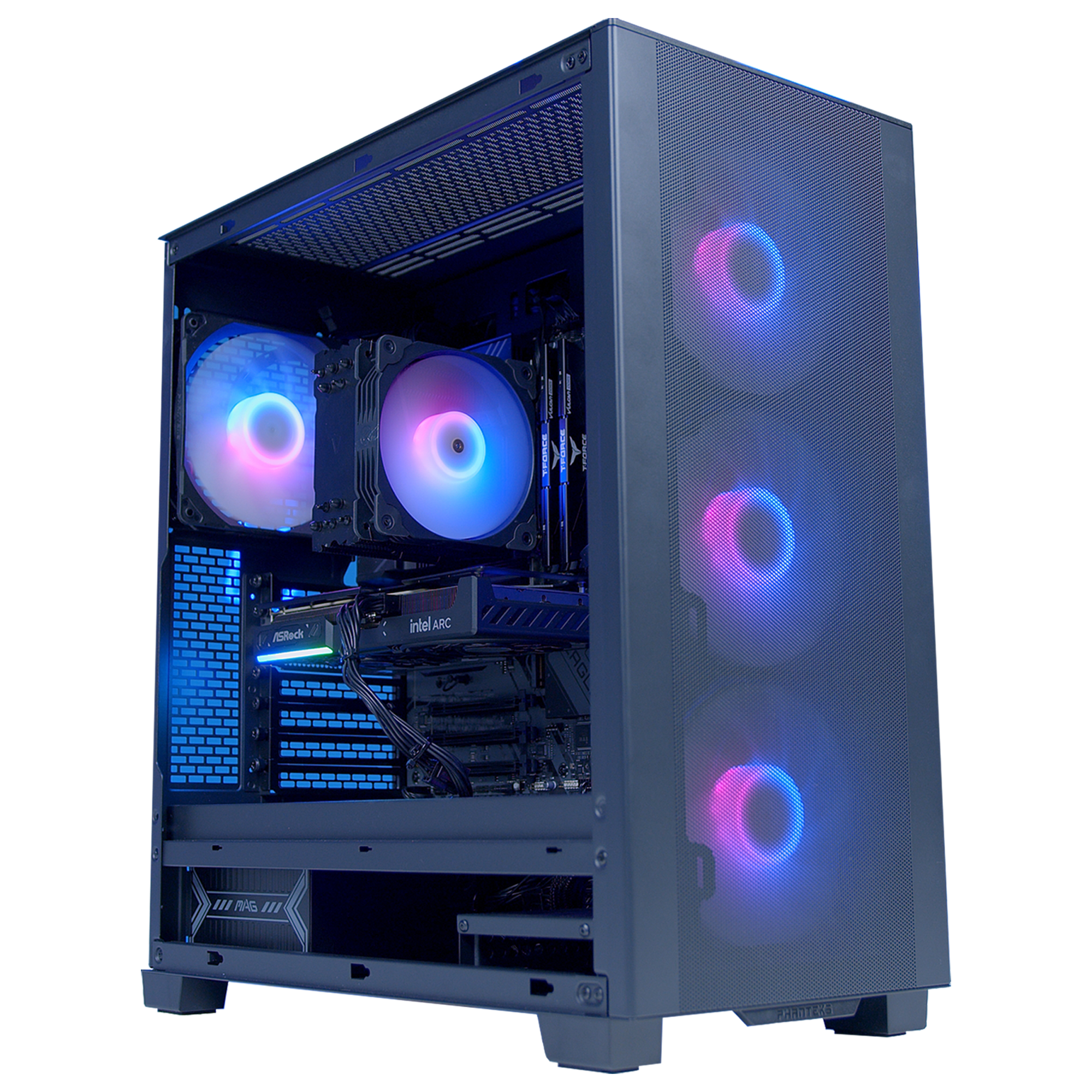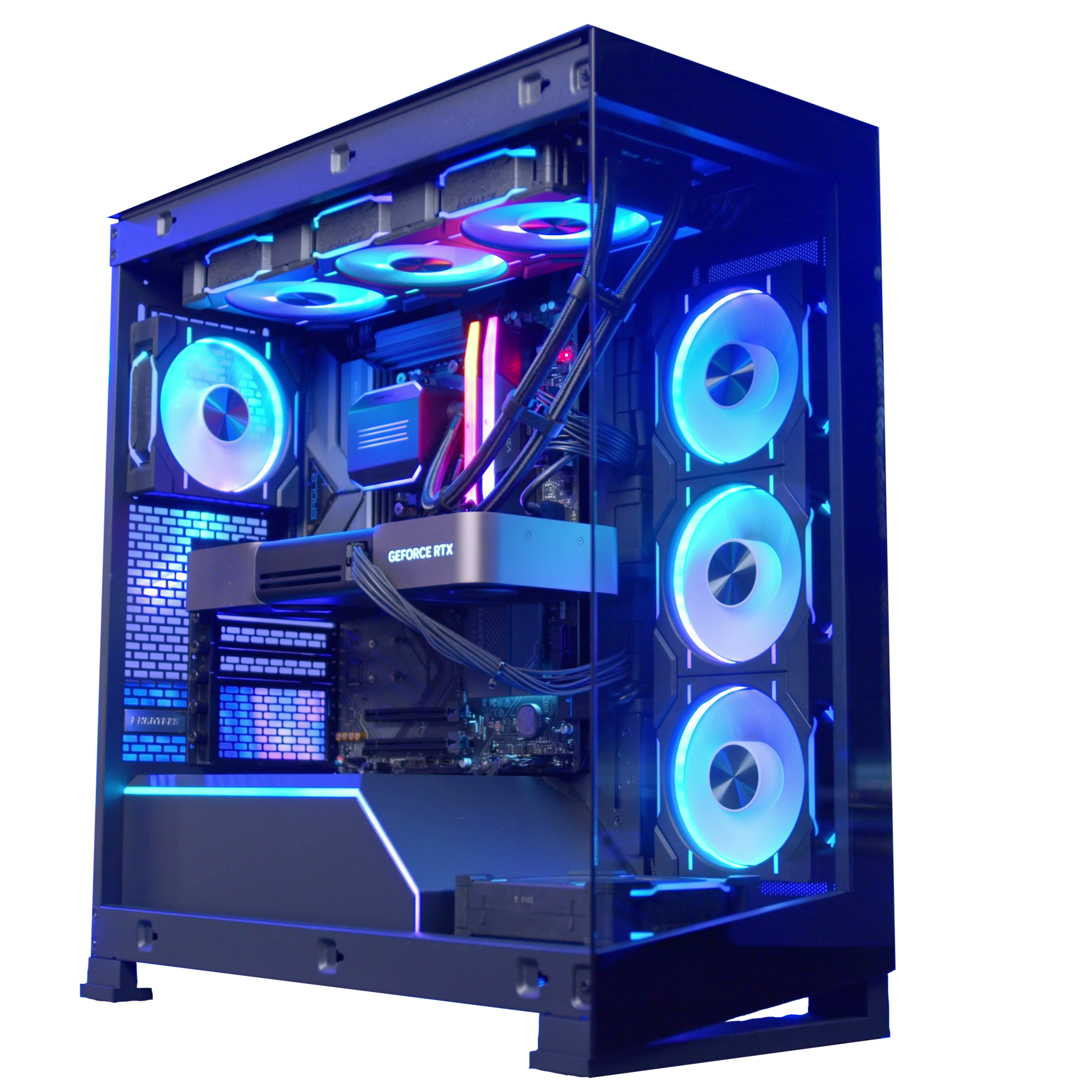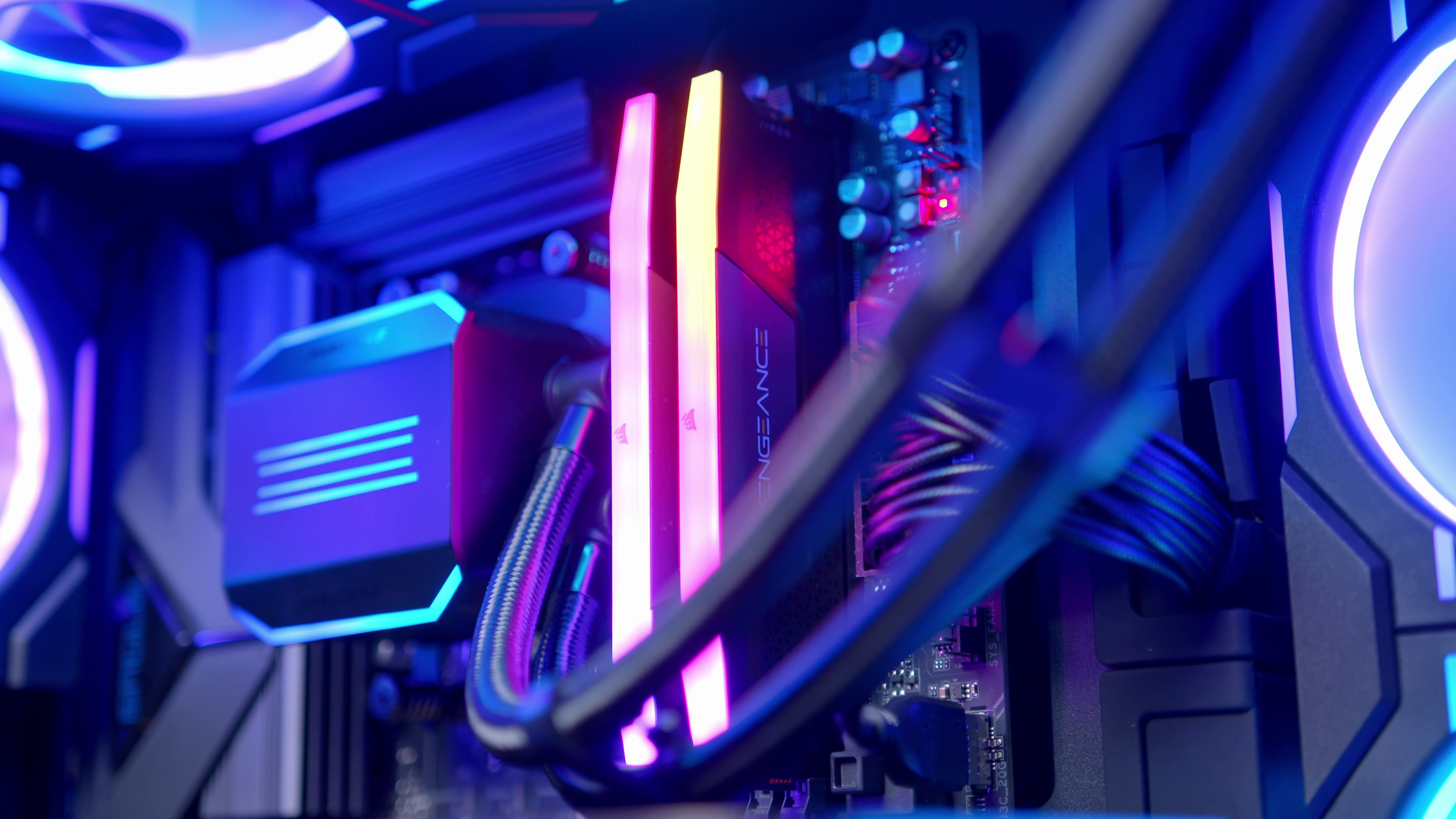GeekaPC 'Apex' (RTX 5080)
Have a question?
Share
Guaranteed Safe Checkout
The GeekaPC 'Apex' is a powerful gaming PC for those looking to play their favourite AAA games at 4K. This system is housed inside a black Phanteks NV5 MK2, a gorgeous dual-chamber chassis with two tempered glass panels and integrated RGB. This system is equipped with the NVIDIA GeForce RTX 5080, an incredibly powerful card built to handle the intensity of 4K gaming.

As the brains of this PC build, handling all of your everyday tasks and workloads is the AMD Ryzen 7 9800X3D. This is one of the most powerful gaming CPUs, equipped with AMD's almighty 3D V-Cache designed to uplift performance in your favourite games. This CPU features eight cores and sixteen threads at a whopping boost clock speed of 5.2GHz, a perfect pairing for the NVIDIA RTX 5080.

Ensuring thermals are under control is the Phanteks Glacier D360. This is a black 360mm liquid cooler that utilises magnetic fans that connect together via daisy-chaining. They offer RGB on the outer chassis of the fan and on the fans, and provide ample cooling for the AMD Ryzen 7 9800X3D.

Providing a home for all of the PC components in this PC build is the Phanteks NV5 MK2. This is a case we've used a number of times in the past due to its robust design, simple build assembly, and fantastic aesthetic. This chassis features an RGB strip on the power supply shroud, and comes shipped to you with Phanteks D30 fans on the side, bottom and rear panels.
For the RAM, we've stuck with a firm favourite across many of our builds, the Corsair Vengeance RGB kit. This is a powerful and reliable RAM kit and provides gamers with additional RGB lighting. Those looking to increase the performance of this build even further also have the option to upgrade from 32GB to 64GB.
On the storage front, the Apex PC build is equipped with either a 1TB Samsung 990 Pro or Crucial P310 as standard, providing read speeds up to 7000MB/s, and writes up to 6000MB/s. Both drives offer very similar performance and are ideal for those looking to minimise load and boot times. If you're running out of space for your favourite games, you also have the option to increase the capacity from 1TB up to 2TB and 4TB for those that need plenty of storage room.

Last but not least is the Corsair RM850e. This is an incredibly reliable and efficient 850W power supply, providing all of the juice for this build. Its Cybenetics Gold efficiency rating ensures that any additional power draw will be minimised across the board.
This build has a dedicated video on the GeekaWhat YouTube channel where the host, James Cousins, details the entire step-by-step process. He covers each component's pros (and cons), along with a suite of gaming benchmarks at the end, providing an idea of how this system performs.
*Note: The GPU model shown in the video and attached photos is the NVIDIA GeForce RTX 5080 Founders Edition card. GeekaPC reserves the right to use any model of the RTX 5080 as selected, depending on real-time availability.
CPU: AMD Ryzen 7 9800X3D
The Ryzen 7 9800X3D is one of the most powerful CPUs you can buy right now for gaming. With top performance at 1080p, 1440p and 4K when combined with the right GPU, this is a titan of a processor.
CPU Cooler: Phanteks Glacier One 360D30
Phanteks Glacier lineup looks the part while providing more than ample cooling for the Ryzen 9 9800X3D processor used in this build. This cooler also comes with 3 fans which match the others used in this system.
Motherboard: Gigabyte X870 Eagle AX
With strong connectivity, on-board WiFi and AMD EXPO support the Gigabyte X870 Eagle AX remains a firm favourite in our builds, and is a well-rounded mid-range motherboard.
RAM: Corsair Vengeance DDR5 RGB
Corsair's range of RAM DIMMs provides a great option for builds powered by a TeamRed CPU. They offer better compatibility, reliability, and gorgeous RGB lighting.
SSD: Crucial P310 or Samsung 990 Pro
Both the Crucial P310 and Samsung 990 Pro are high-performance SSDs designed to offer blazing-fast load and boot times in your favourite games.
GPU: NVIDIA GeForce RTX 5080
The NVIDIA GeForce RTX 5080 is a solid graphics card for those playing their favourite titles at 4K with ray tracing switched on. With the bonus addition of DLSS and Frame Gen, playing your favourite games at high framerates is a breeze!
Case: Phanteks NV5 MK2
What is there to say about the Phanteks NV5? It won the GeekaWhat Design award, looks superb and is a great case from a build, compatibility and IO standpoint.
PSU: Corsair RM850e
For a build like this, a strong 850W unit is perfect when it comes to power. The RM850e from Corsair is one of the best-reviewed around.
Operating System: Windows 11
All of our systems come preinstalled with an activated copy of Windows 11 set to the 'Out of Box Experience'. This allows you to set the PC back up to your liking.
🎮 Cyberpunk 2077
Settings: 4K High, DLSS/FSR On, Frame Generation On, Ray Tracing High Texture Quality High, Crowd Density High, Contact Shadows On, Anisotropy x8
NVIDIA GeForce RTX 5080: 107FPS Average
🎮 Alan Wake II
Settings: 4K High, Frame Gen On, Ray Tracing High, Quality Preset High, Post-Processing Quality Medium, Texture Resolution Ultra, Texture Filtering High, Volumetric Lighting Medium, SSAO On
NVIDIA GeForce RTX 5080: 91FPS Average
🎮 Hogwarts Legacy
Settings: 4K High, Anti-Aliasing Mode High, Global Quality Preset High, Effects Quality High, Material Quality High, Sky Quality High, Texture Quality High
NVIDIA GeForce RTX 5080: 101FPS Average
🎮 Apex Legends
Settings: 4K High, V-Sync Disabled, Anti-Aliasing TSAA, Texture Streaming Budget High, Texture Filtering x8, Ambient Occlusion Quality High
NVIDIA GeForce RTX 5080: 266FPS Average
🎮 Fortnite
Settings: 1080p Competitive, Anti Aliasing Mode TAA, Global Illumination Off, Reflections Off, View Distance Far, Textures Low, Effects Low, Post-Processing Low
NVIDIA GeForce RTX 5080: 440FPS Average
Please Note: Listed performance numbers are not guaranteed, and replicating these average frame rates will depend on a number of factors. These include: ambient room temperature, game settings used, resolution selected, game scene, game mode (e.g. online multiplayer vs offline single player) and more. All performance data captured using CapFrameX.























